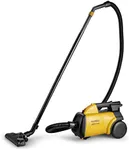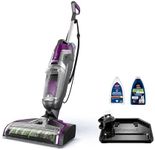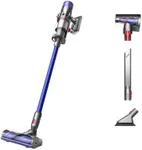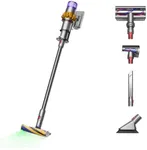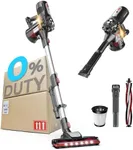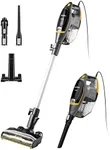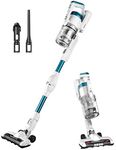Buying Guide for the Best Hardwood Floor Vacuums
Choosing the right vacuum for hardwood floors is essential to maintain the beauty and longevity of your flooring. Hardwood floors require a vacuum that can effectively clean without causing damage. When selecting a vacuum, consider the following key specifications to ensure you get the best fit for your needs.Suction PowerSuction power refers to the vacuum's ability to pick up dirt and debris. For hardwood floors, you need a vacuum with strong suction to effectively remove dust and small particles from the surface and between floorboards. Suction power is often measured in air watts (AW) or pascals (Pa). For hardwood floors, a moderate to high suction power is ideal. Too low, and it won't clean effectively; too high, and it might be difficult to maneuver. Consider your floor's condition and the amount of debris typically present to determine the right level of suction power for you.
Brush RollThe brush roll is the rotating brush that helps lift dirt from the floor. For hardwood floors, a vacuum with a soft brush roll or an option to turn off the brush roll is important to prevent scratches and damage. Some vacuums come with a dedicated hardwood floor attachment that has soft bristles or no bristles at all. If you have a mix of flooring types, look for a vacuum with an adjustable brush roll to switch between surfaces easily.
Filtration SystemThe filtration system captures dust and allergens, preventing them from being released back into the air. High-efficiency particulate air (HEPA) filters are the gold standard, capturing 99.97% of particles as small as 0.3 microns. This is especially important if you have allergies or pets. For hardwood floors, a vacuum with a good filtration system ensures that fine dust and allergens are effectively trapped, keeping your home cleaner and healthier.
Weight and ManeuverabilityWeight and maneuverability refer to how easy the vacuum is to move around and use. Lightweight vacuums are easier to carry and push, which is beneficial for hardwood floors to avoid dragging and potential scratches. Look for vacuums with swivel steering and a slim design to navigate around furniture and tight spaces effortlessly. If you have a large area to clean or multiple levels, a lightweight and highly maneuverable vacuum will make the task much easier.
Noise LevelNoise level is the amount of sound the vacuum produces while in use. Measured in decibels (dB), quieter vacuums are generally more pleasant to use, especially in homes with children or pets. For hardwood floors, a vacuum with a lower noise level (around 60-70 dB) is ideal to avoid disturbing the household. Consider your sensitivity to noise and the times you typically vacuum to choose a model with an appropriate noise level.
Attachments and AccessoriesAttachments and accessories enhance the vacuum's versatility and cleaning efficiency. Common attachments for hardwood floors include crevice tools, dusting brushes, and upholstery tools. These can help clean corners, edges, and other hard-to-reach areas without scratching the floor. If you have specific cleaning needs, such as pet hair removal or reaching high places, look for a vacuum that includes or is compatible with the necessary attachments.
Corded vs. CordlessCorded vacuums offer continuous power, while cordless models provide greater mobility and convenience. For hardwood floors, both types can be effective, but your choice depends on your cleaning habits and preferences. Corded vacuums are ideal for longer cleaning sessions without worrying about battery life, while cordless vacuums are great for quick clean-ups and easy maneuverability. Consider the size of your cleaning area and how often you vacuum to decide which type suits you best.


